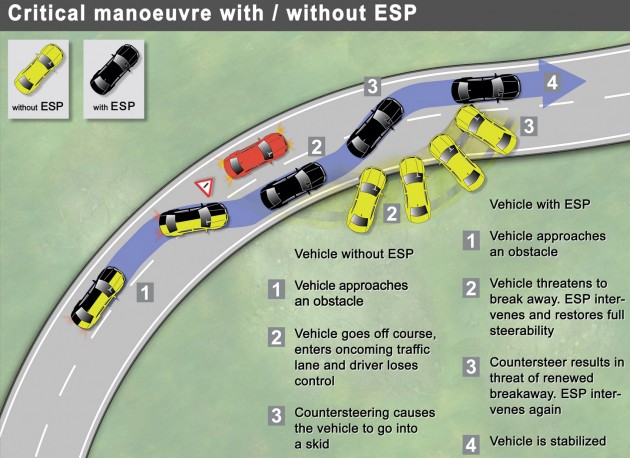You’re driving along the highway to KLIA to drop your wife off to catch a flight. The skies are pouring down at full blast, and your wipers are struggling to keep up. There’s loads of water on the road, so you keep to the middle lane to reduce your chances of aquaplaning. You think there’s plenty of time to reach the airport, and since you’re taking precautions, everything should be dandy.
But not everyone is as conservative as you in the wet. Another car behind you speeding along in the fast lane suddenly starts spinning, and spinning, and spinning – and you watch it slowly come closer and closer to you through your rear view mirror. It’s spinning 360 degrees while sliding towards you at a higher speed than you’re driving forward with full traction! BAM! The other car hits you at highway speeds and sends your car veering almost sideways out of control towards the barrier.
Seems a little far fetched, but this actually happened to me some time ago. And I didn’t hit the barrier, because my car was equipped with stability control. In seconds, stability control did its magic, applied brake force to the necessary individual wheels to stabilise the car. I regained control of the vehicle without much effort, and could have proceeded with my journey if I had to. A potential disaster had been averted, and I got away with just a broken bumper and a tail lamp.
There are so many potential situations where stability control can potentially save your life. Another driver might be merging into your lane without bothering to check his wing mirrors to see if he’d be ploughing straight into you – and at highway speeds, an evasive manoeuvre could see you lose control as the car starts to fishtail.
Most people are unaware of what stability control is. The layman interprets car safety as being passive – which means the car must be good at saving your skin when you crash. He thinks the body must be “solid.” and he kicks the bumpers, shuts the hood and slams the door at the showroom to apparently test this by the sound the body parts make. This must be an acquired skill like wine tasting, as it doesn’t make sense to me at all. And then he counts the number of airbags in the car – the more, the better.
He also takes into account if the car has ABS, but he thinks this means the brakes are stronger, not the real meaning of ABS (Anti-Lock Braking System), which basically allows you to steer while you’re braking, so you can steer around the object that’s in your way. The point is, ABS isn’t passive safety, but it’s active safety, essentially a vehicle system that works to prevent you from crashing, rather than try to cushion the impact of a crash.
Another form of active safety is stability control. There are really not many people that know what stability control is. So when market surveys are done, this important safety feature doesn’t show up as being desired by the potential buyer, and so the bean-counters at the car company decide that they don’t need to put this feature in to sell cars
We have even seen cars that come with stability control in one generation and with the next generation, the feature is gone, all because market studies showed consumers did not ask for it, and so it didn’t matter when it came to sales numbers whether such an important safety feature was included or not.
Since 2009, Euro NCAP began awarding three Safety Assist points to a car if stability control is fitted as standard across the model range, or if it is an option on every variant and the manufacturer also expects to sell at least 95% of cars with the system as standard equipment.
From 2012, stability control has been regarded with such importance that Euro NCAP will only reward equipment with a five-star rating when ESC is fitted as standard across the whole of the model range, and the feature has also become compulsory for all new cars sold in the EU. The NHTSA has done that for 2012 as well.
Here are three very good videos that explain how stability control works. I reckon it does the job much better than trying to explain it in text.

No comments:
Post a Comment